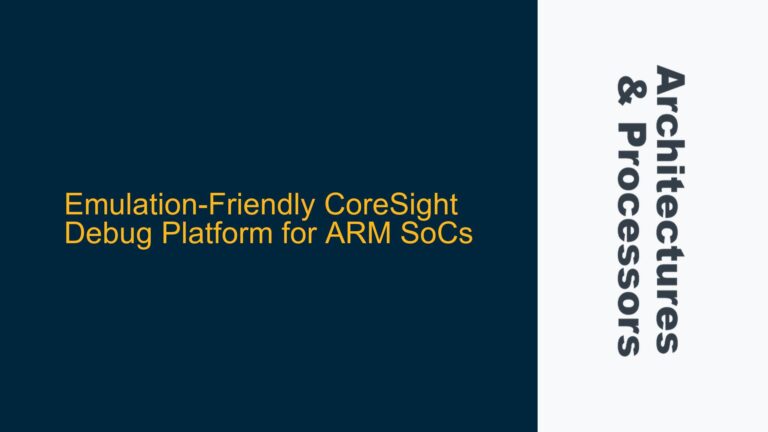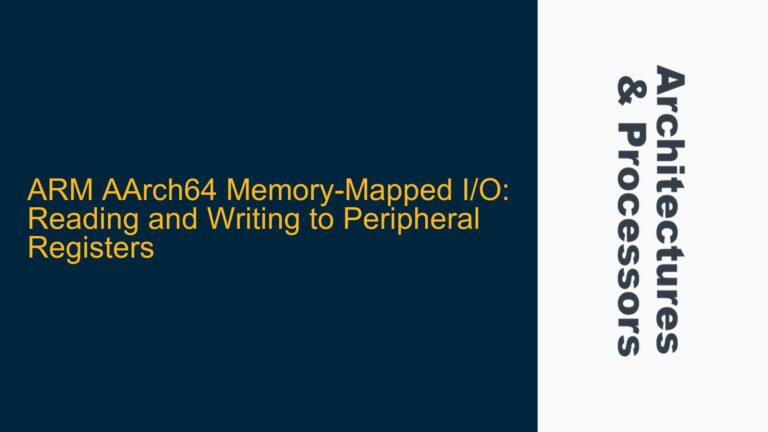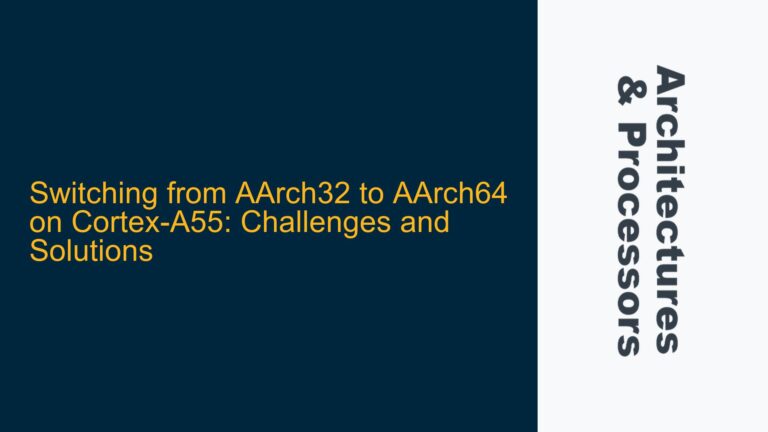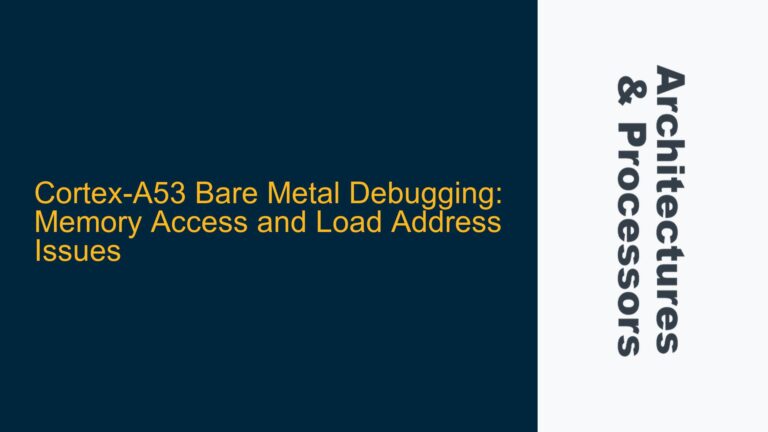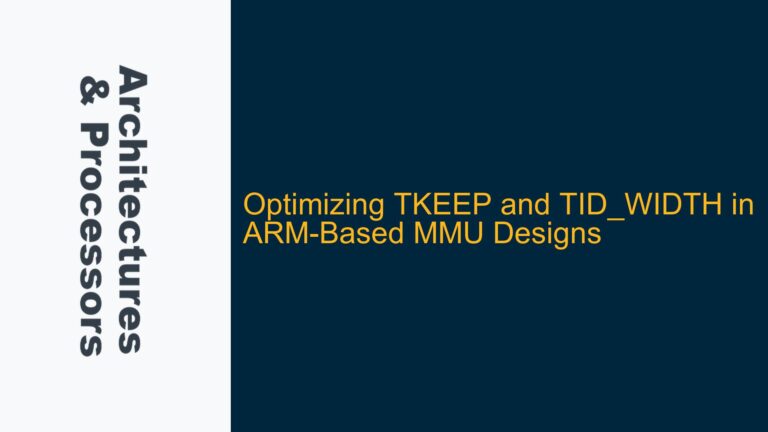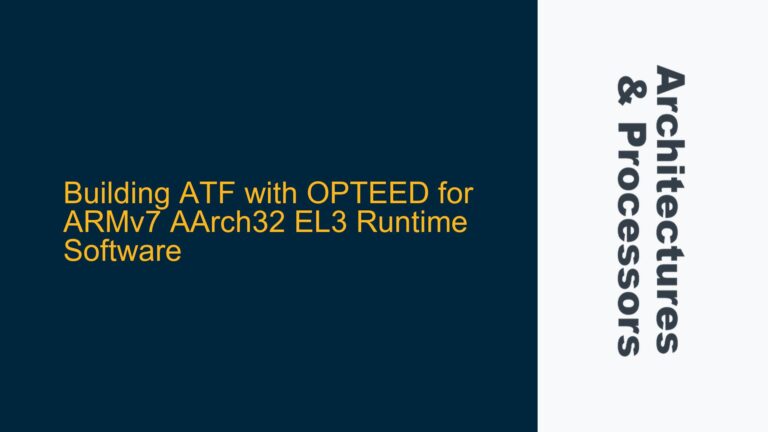ARMv8 DAIF Register Updates and Context Synchronization Requirements
In the ARMv8 architecture, the DAIF register is a critical component of the Processor State (PSTATE) that controls the masking of Debug, SError, IRQ, and FIQ exceptions. The DAIF register is part of the PSTATE, which is a collection of system control registers that govern the processor’s behavior. The PSTATE includes fields such as PAN (Privileged Access Never), D (Debug mask), A (SError mask), I (IRQ mask), and F (FIQ mask). These fields are essential for managing exception handling and ensuring the correct operation of the processor in various execution states.
The DAIF register is updated using the MSR (Move to System Register) instruction, which allows the processor to modify the state of the DAIF fields. The MSR instruction is used to set or clear the DAIF bits, thereby enabling or disabling the corresponding exceptions. For example, the instruction msr daifset, #0xf sets all four DAIF bits, effectively masking all exceptions. Conversely, msr daifclr, #0xf clears all DAIF bits, enabling all exceptions.
The ARMv8 architecture specifies that writes to the PSTATE fields, including DAIF, occur in program order without the need for additional synchronization. This means that the processor guarantees that the effects of the MSR instruction on the DAIF register are immediately visible to subsequent instructions in the program flow. However, this guarantee is contingent on the absence of context-changing operations that might require explicit synchronization.
Context-changing operations, such as cache and TLB maintenance instructions or changes to other system control registers, may necessitate the use of an Instruction Synchronization Barrier (ISB) to ensure that the effects of the MSR instruction are visible to subsequent instructions. The ISB instruction ensures that all subsequent instructions are fetched with the updated state of the processor, including the DAIF register. Without an ISB, there is a risk that subsequent instructions might be executed with an outdated view of the DAIF state, leading to unexpected behavior.
The necessity of an ISB after updating the DAIF register depends on the specific context in which the update occurs. In general, if the DAIF update is followed by instructions that depend on the new state of the DAIF register, an ISB should be used to ensure that the updated state is visible to those instructions. However, if the DAIF update is not immediately followed by dependent instructions, an ISB may not be required.
Memory Ordering and Synchronization in ARMv8 Architecture
The ARMv8 architecture employs a weakly-ordered memory model, which allows for out-of-order execution and memory accesses to improve performance. This memory model introduces the possibility of memory operations being observed in a different order by different processors or devices in the system. To manage this, the architecture provides a set of memory barriers and synchronization instructions, including the ISB, DSB (Data Synchronization Barrier), and DMB (Data Memory Barrier).
The ISB instruction is specifically designed to ensure that all subsequent instructions are fetched with the updated state of the processor. This is particularly important when modifying system control registers, such as the DAIF register, as the effects of these modifications must be immediately visible to subsequent instructions. The ISB instruction flushes the processor’s pipeline and ensures that all previous instructions have completed before fetching new instructions.
In the context of the DAIF register, the ISB instruction is not strictly required after every MSR instruction that modifies the DAIF bits. This is because the ARMv8 architecture guarantees that writes to the PSTATE fields, including DAIF, occur in program order without the need for additional synchronization. However, this guarantee only applies to the immediate visibility of the DAIF update within the same execution context.
If the DAIF update is followed by a context-changing operation, such as a branch to a different exception level or a change in the execution state, an ISB may be required to ensure that the updated DAIF state is visible in the new context. For example, if the DAIF update is followed by a return from exception (ERET) instruction, an ISB should be used to ensure that the updated DAIF state is visible in the exception return path.
The necessity of an ISB after a DAIF update also depends on the specific use case and the potential for race conditions. In multi-core systems or systems with multiple devices accessing shared resources, the lack of an ISB after a DAIF update could lead to inconsistent views of the DAIF state across different cores or devices. In such cases, an ISB should be used to ensure that the updated DAIF state is globally visible.
Implementing Context Synchronization in ARMv8 Systems
In ARMv8 systems, ensuring proper context synchronization is crucial for maintaining the correct operation of the processor and avoiding subtle bugs related to exception handling and system control register updates. The ISB instruction plays a key role in this synchronization by ensuring that all subsequent instructions are executed with the updated state of the processor.
When implementing context synchronization in ARMv8 systems, it is important to consider the specific requirements of the system and the potential for race conditions. In general, an ISB should be used after any operation that modifies the state of the processor in a way that could affect subsequent instructions. This includes modifications to the DAIF register, as well as other system control registers and context-changing operations.
For example, consider a scenario where the DAIF register is updated to mask all exceptions, and then a critical section of code is executed that must not be interrupted by exceptions. In this case, an ISB should be used after the DAIF update to ensure that the updated state is visible to the critical section of code. Without an ISB, there is a risk that the critical section could be interrupted by an exception, leading to unexpected behavior.
Similarly, if the DAIF register is updated as part of a context switch or exception handling routine, an ISB should be used to ensure that the updated state is visible in the new context. This is particularly important in multi-core systems, where different cores may have different views of the DAIF state. By using an ISB, the system can ensure that all cores have a consistent view of the DAIF state, avoiding potential race conditions and ensuring correct operation.
In summary, while the ARMv8 architecture guarantees that writes to the PSTATE fields, including DAIF, occur in program order without the need for additional synchronization, the use of an ISB instruction is still recommended in certain contexts to ensure that the updated state is visible to subsequent instructions. This is particularly important in multi-core systems, systems with multiple devices accessing shared resources, and systems with complex exception handling routines. By carefully considering the specific requirements of the system and the potential for race conditions, developers can implement effective context synchronization and ensure the correct operation of their ARMv8 systems.

